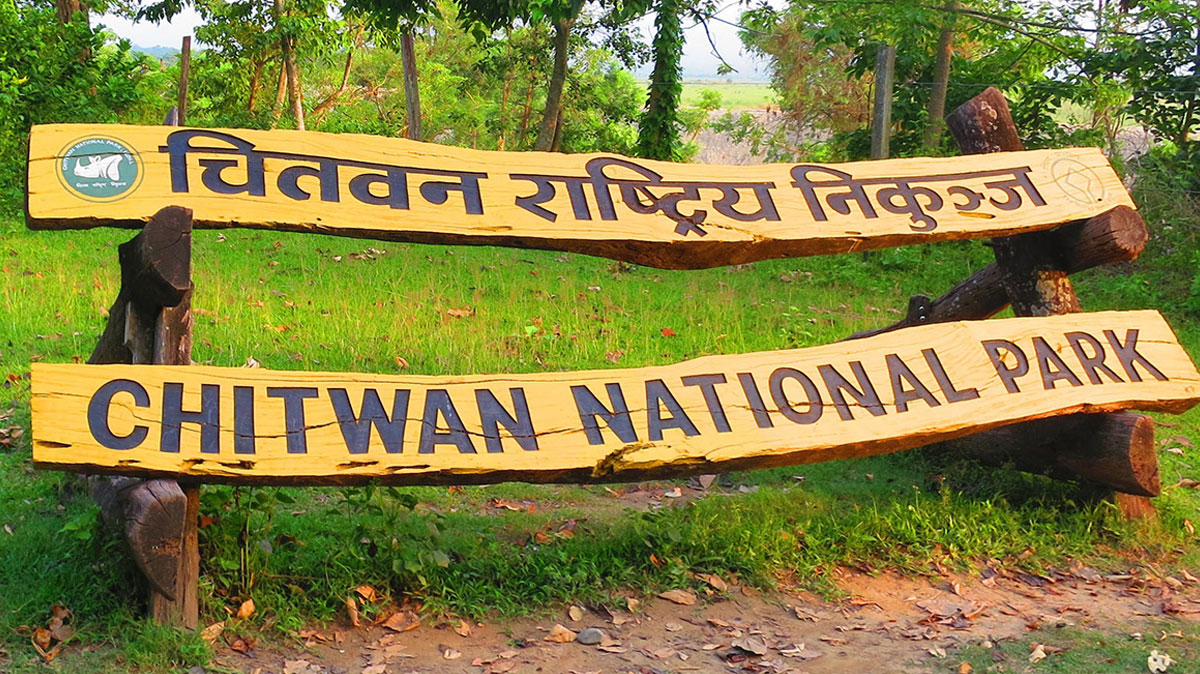Nestled in the subtropical lowlands of Nepal, Chitwan National Park is a gem that offers a unique blend of rich biodiversity, cultural heritage, and adventure. As Nepal’s first national park, established in 1973 and recognized as a UNESCO World Heritage Site in 1984, Chitwan National Park spans 932 square kilometers and is a premier destination for eco-tourism. This natural haven attracts visitors from around the world, offering a glimpse into the diverse ecosystems and the opportunity to engage in various activities that make for an unforgettable experience.
Chitwan National Park is renowned for its impressive variety of flora and fauna. The park is home to over 700 species of wildlife, including some of the most endangered animals. Among its most famous residents are the Bengal tiger, the one-horned rhinoceros, and the gharial crocodile. The park also hosts a healthy population of leopards, sloth bears, and wild elephants. Bird enthusiasts will find Chitwan a paradise, with more than 500 bird species recorded, including the vibrant kingfisher, the majestic crested serpent eagle, and the endangered Bengal florican.
The park’s dense forests, grasslands, and riverine ecosystems provide a perfect habitat for this diverse wildlife. The rich vegetation includes sal forests, riverine forests, and tall elephant grass, creating a lush and picturesque landscape. These ecosystems not only support wildlife but also contribute to the park’s overall beauty and serenity, making it a captivating destination for nature lovers.
Chitwan National Park offers a plethora of activities that cater to all types of travelers. The most popular activity is the jungle safari, which can be undertaken on foot, by jeep, or on the back of an elephant. These safaris provide an intimate experience with nature, allowing visitors to observe wildlife in their natural habitat. The jeep safaris, in particular, offer a thrilling ride through the dense forests and open grasslands, increasing the chances of spotting elusive creatures like tigers and leopards.
For those who prefer a slower pace, canoe rides on the Rapti and Narayani Rivers are an excellent option. These rides offer a tranquil experience, gliding past the riverbanks teeming with wildlife. It’s common to see crocodiles basking in the sun and various water birds hunting for fish. Canoe rides are not only a way to enjoy the serene beauty of the park but also an opportunity to spot animals that might be missed during a jungle safari.
Bird watching is another activity that draws tourists to Chitwan. With over 500 species of birds, including both resident and migratory species, the park is a birdwatcher’s paradise. Guided bird-watching tours are available, providing insights into the different species and their behaviors. The early morning and late afternoon are the best times for bird watching, as this is when birds are most active.
In addition to its natural wonders, Chitwan National Park offers rich cultural experiences. The indigenous Tharu community resides in the buffer zone of the park, and their unique culture and traditions are an integral part of the Chitwan experience. Visitors can explore Tharu villages, where they can learn about traditional farming practices, visit local museums, and watch cultural performances. The Tharu stick dance, in particular, is a captivating spectacle that showcases the community’s rich cultural heritage.
Staying in a Tharu village homestay is an excellent way to immerse oneself in local culture. These homestays offer a chance to live like the locals, enjoying traditional meals and participating in daily activities. This cultural exchange enriches the travel experience, providing insights into the harmonious coexistence of humans and nature in this region.
Chitwan National Park is not only a tourist attraction but also a significant conservation area. The park’s establishment marked the beginning of Nepal’s commitment to wildlife conservation. Efforts to protect endangered species, such as the Bengal tiger and the one-horned rhinoceros, have been successful, leading to an increase in their populations. Anti-poaching units and community-based conservation programs play a crucial role in these efforts.
Tourism in Chitwan also contributes to conservation. The revenue generated from tourism activities supports park management and conservation initiatives. Additionally, raising awareness among tourists about the importance of wildlife conservation helps garner support for ongoing efforts. Eco-tourism practices are encouraged, ensuring that tourism activities have minimal impact on the environment and wildlife.
Chitwan National Park offers a range of accommodations to suit different preferences and budgets. From luxury lodges and resorts to budget-friendly guesthouses and homestays, visitors have plenty of options. Many lodges and resorts are located in the buffer zone, providing easy access to the park while offering comfortable amenities and stunning views of the surrounding landscapes.
Getting to Chitwan is relatively easy. The park is accessible by road from Kathmandu and Pokhara, with several bus services operating daily. For those who prefer a quicker option, there are flights from Kathmandu to Bharatpur, followed by a short drive to the park. The well-developed infrastructure ensures that Chitwan is accessible year-round, making it a convenient destination for tourists.
The best time to visit Chitwan National Park is from October to March when the weather is cool and dry. During these months, the chances of spotting wildlife are higher, as animals are more active. The lush green landscapes and clear skies make for beautiful scenery and excellent photography opportunities. The monsoon season, from June to September, brings heavy rains, making some areas of the park inaccessible. However, the monsoon also revitalizes the park’s ecosystems, and the post-monsoon period sees the park at its most vibrant.
Chitwan National Park is a destination that offers something for everyone. Its rich biodiversity, adventure activities, cultural experiences, and conservation efforts make it a must-visit for any traveler to Nepal. Whether you’re a wildlife enthusiast, a culture lover, or an adventure seeker, Chitwan promises an unforgettable experience that will leave you with lasting memories. As tourism continues to grow in this region, it’s essential to prioritize sustainable practices to ensure that Chitwan remains a pristine and thriving natural haven for future generations.






